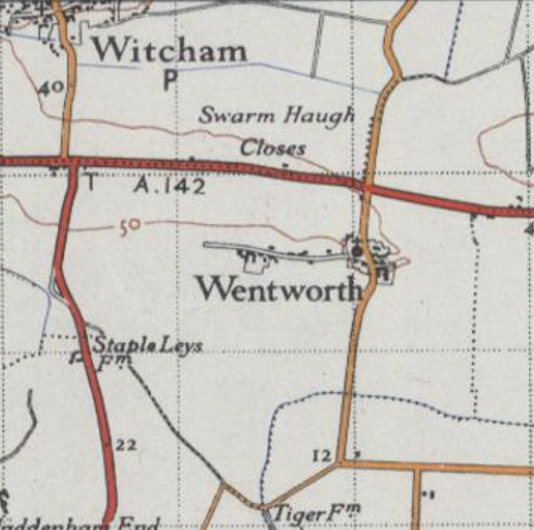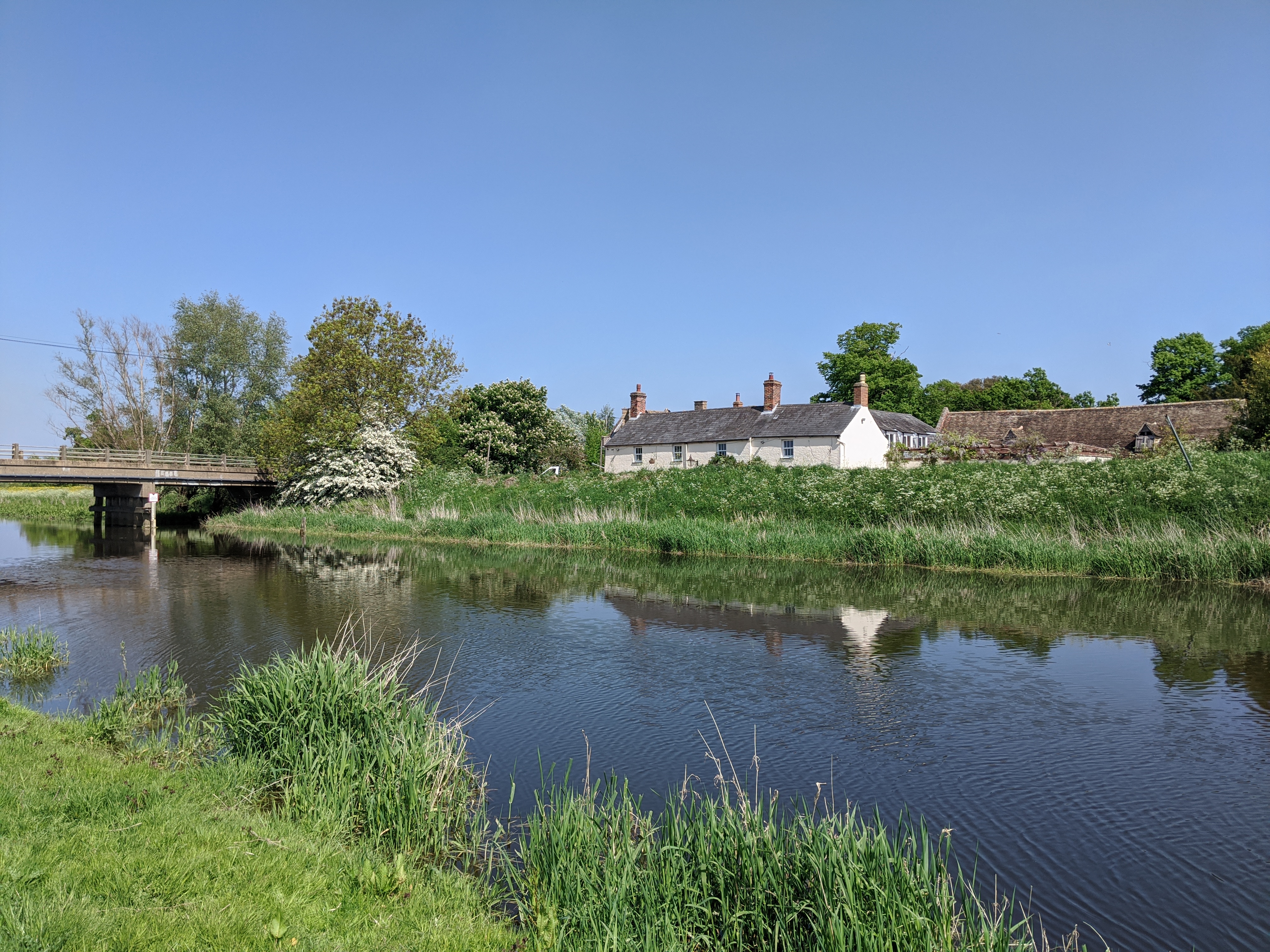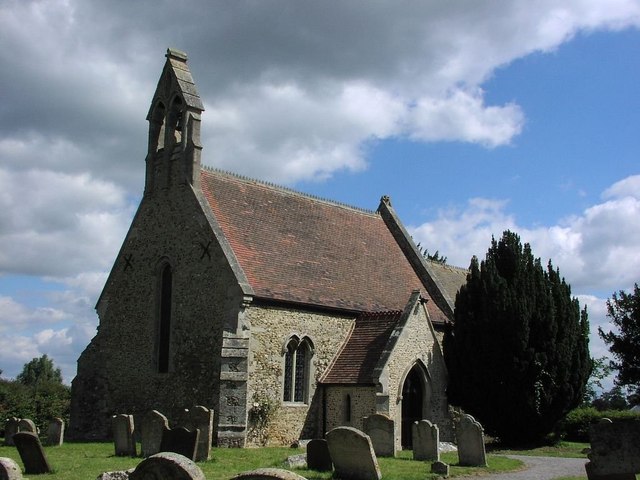|
Ely Rural District
Ely Rural District was a rural district in England from 1894 to 1974. It was named after Ely, Cambridgeshire, Ely, but did not include the city itself, instead covering the rural area to the west and north of it. It formed part of the administrative counties of England, administrative county of the Isle of Ely from 1894 to 1965, when this was merged into Cambridgeshire and Isle of Ely. History The district had its origins in the Ely Poor Law Union, which had been created in 1836, covering Ely and several surrounding parishes. In 1872 sanitary districts were established, giving public health and local government responsibilities for rural areas to the existing Board of guardians, boards of guardians of poor law unions. The Ely Rural Sanitary District therefore covered the area of the poor law union except for Ely itself, which already had a local board of health and so formed its own urban sanitary district. The Ely Rural Sanitary District was administered from Ely Union Workhou ... [...More Info...] [...Related Items...] OR: [Wikipedia] [Google] [Baidu] |
Rural District
A rural district was a type of local government area – now superseded – established at the end of the 19th century in England, Wales Wales ( ) is a Countries of the United Kingdom, country that is part of the United Kingdom. It is bordered by the Irish Sea to the north and west, England to the England–Wales border, east, the Bristol Channel to the south, and the Celtic ..., and Ireland for the administration of predominantly rural areas at a level lower than that of the Administrative county, administrative counties.__TOC__ England and Wales In England and Wales rural districts were created in 1894 by the Local Government Act 1894 (56 & 57 Vict. c. 73) along with Urban district (Great Britain and Ireland), urban districts. They replaced the earlier system of sanitary districts (themselves based on poor law unions, but not replacing them). Each rural district had an elected rural district council (RDC), which inherited the functions of the earlier sanitary di ... [...More Info...] [...Related Items...] OR: [Wikipedia] [Google] [Baidu] |
Cambridgeshire
Cambridgeshire (abbreviated Cambs.) is a Ceremonial counties of England, ceremonial county in the East of England and East Anglia. It is bordered by Lincolnshire to the north, Norfolk to the north-east, Suffolk to the east, Essex and Hertfordshire to the south, Northamptonshire to the west, and Bedfordshire to the south-west. The largest settlement is the city of Peterborough, and the city of Cambridge is the county town. The county has an area of and had an estimated population of 906,814 in 2022. Peterborough, in the north-west, and Cambridge, in the south, are by far the largest settlements. The remainder of the county is rural, and contains the city of Ely, Cambridgeshire, Ely in the east, Wisbech in the north-east, and St Neots and Huntingdon in the west. For Local government in England, local government purposes Cambridgeshire comprises a non-metropolitan county, with five Districts of England, districts, and the Unitary authorities of England, unitary authority area o ... [...More Info...] [...Related Items...] OR: [Wikipedia] [Google] [Baidu] |
Witcham
Witcham is a small village near Ely in Cambridgeshire, England. The village is surrounded by fenland farms and has a village hall and a 13th-century church dedicated to St Martin. It has a pub called the White Horse, which was the winner of the Ely and District CAMRA Rural Pub of the Year Award 2006, 2010, 2011 and Overall Pub of the Year Award 2011. It also has a fine village green. The village hosts the World Pea Shooting Championships on the second Saturday in July every year and has staged the competition annually since 1971. Witcham is built around a cross-roads in the centre of the village with each of the four roads having housing on each side for 50-200m. The north-bound street is called "Martins Lane", the east-bound street is "High Street", south-bound is "The Slade", and west-bound is "Silver Street", which leads to the more recent housing developments of "Westway Place" and "The Orchards". The name of the village derives from "Wycham", meaning "place of the wyc ... [...More Info...] [...Related Items...] OR: [Wikipedia] [Google] [Baidu] |
Wilburton
Wilburton is a small village of just over 1,000 inhabitants, situated in Cambridgeshire, England. It is 6 miles south west of Ely. While nominally an agricultural village, many residents work in Cambridge, Ely or London. History Wilburton is a parish of around 800 acres lying on the important medieval route from Earith to Stretham, and extending south to the River Great Ouse. As much of the land in the region is fenland, the village's position on the ridge between Stretham and Haddenham at the southern end of the Isle of Ely was important in its growth and success. Listed as ''Wilburhtun'' in 970 and ''Wilbertone'' in the Domesday Book, the name "Wilburton" means "Farmstead or village of a woman called Wilburh". The village contains a number of old buildings, and was described in the 19th century as "very neat and contains some excellent houses". These include the Burystead (the former manor house, built c.1600), one of the few surviving half-timbered houses in the reg ... [...More Info...] [...Related Items...] OR: [Wikipedia] [Google] [Baidu] |
Wentworth, Cambridgeshire
Wentworth is a small village near Ely, Cambridgeshire, Ely in Cambridgeshire, England. It is in the Isle of Ely, adjacent to Grunty Fen, Wentworth lies south of A142 road, the A142 between Witchford and Sutton-in-the-Isle, Sutton, approximately 5 miles west of Ely. The village is centred on St Peter's Church and a number of listed buildings at the junction of Main Street and Church Road. Residents travel to nearby settlements, including Ely for many goods and services. There was no public transportation serving the village until 2017, when limited bus service began. The nearest railway station serving the village is Ely railway station. In the 1870s, Wentworth, Cambridgeshire was described as: " a parish in Ely district, Cambridge; 4½ miles W by S of Ely railway station, Ely r. station. Post town, Ely. Acres, 1,437. Real property, £2,653. Pop., 180. Houses, 40. The living is a rectory in the diocese of Ely. Value, £450.* Patrons, the Dean and Chapter of Ely. The church is ... [...More Info...] [...Related Items...] OR: [Wikipedia] [Google] [Baidu] |
Thetford, Cambridgeshire
Thetford is a civil parish in the ward of Stretham, near Ely, in the East Cambridgeshire district, in the county of Cambridgeshire, England. The village of Little Thetford Little Thetford is a small village in the civil parishes in England, civil parish of Thetford, Cambridgeshire, Thetford, south of Ely, Cambridgeshire, Ely in Cambridgeshire, England, about by road from London. The village is built on a boul ... is coterminous with the parish. In the 2001 census, the parish had a population of 639. References Civil parishes in Cambridgeshire East Cambridgeshire District {{Cambridgeshire-geo-stub ... [...More Info...] [...Related Items...] OR: [Wikipedia] [Google] [Baidu] |
Sutton-in-the-Isle
Sutton or Sutton-in-the-Isle is a village and civil parish in the county of Cambridgeshire in England, near the city of Ely, Cambridgeshire, Ely. The "in-the-Isle" suffix refers to the fact that the village is part of the Isle of Ely, once an island in the Fens and also an administrative counties of England, administrative county until 1965. The village location on the high ground of the Isle of Ely provides commanding views across the surrounding low-lying fens. History The village was mentioned in the Domesday Book of 1086, identified as ''Sudtone''. There were then 9 sokemen, 8 villeins (each with 7.5 acres), 15 cotters and 7 serfs. In 1109, the charter 51 of Bishop Hervey included ''Suttune'' in the lands recorded as being conferred upon the Cathedral Priory of Ely. According to the Ely Diocesan Register, the Manor of Sutton was established in 1292 and belonged to the Priory. In 1312, Sutton was granted the right to hold a street market each Thursday; this was held on th ... [...More Info...] [...Related Items...] OR: [Wikipedia] [Google] [Baidu] |
Stretham
Stretham Locally, the is a glottal stop: or even is a village and civil parish south-south-west of Ely, Cambridgeshire, Ely in Cambridgeshire, England, about by road from London. Its main attraction is Stretham Old Engine, a steam engine, steam-powered pump used to drain the fens. The pump is still in use today although converted to electric power. It has open days throughout the year. History A Bronze Age hoard consisting of gold jewellery including a torque, bracelet, six ribbed-rings as well as a bronze rapier was discovered in Granta Fen near Stretham in 1850. Dating to between 1300 and 1000 BC, the torque is in the Hunt Museum in Limerick while the remainder of the treasure is in the British Museum. Stretham means ''homestead or village on the road'' (possibly Roman road, Roman); Latin ''strata'' for paved road or old English ''ystrad'' for road plus old English ''ham'' for village. The route of the Roman road from Cambridge is uncertain beyond Waterbeach. Brythno ... [...More Info...] [...Related Items...] OR: [Wikipedia] [Google] [Baidu] |
Mepal
Mepal is a village in Cambridgeshire, England. Mepal is part of the East Cambridgeshire district, and is located just north of the A142 road between Ely, Cambridgeshire, Ely and Chatteris. First listed as ''Mepahala'' in the 12th century, the village name meant 'Nook of land of a man named Mēapa' in Old English. History Mepal's history has always been tied up with that of The Fens and the village is less than ten metres above sea level. One of the smaller villages of the Isle of Ely, Mepal lies at the western end of the Isle on what was once the shore between the fenland and the higher ground of the Isle. The Old Bedford River and the New Bedford River (also known as the Hundred Foot Drain) run very close on the northwestern side of the village, and the only important bridges of the rivers are found in Mepal. The old and new rivers, originally modified by the Victorians, offer the main drainage route for the Fens and retain a major flood plain between the two river beds. The ... [...More Info...] [...Related Items...] OR: [Wikipedia] [Google] [Baidu] |
Littleport, Cambridgeshire
Littleport is a town in East Cambridgeshire, in the Isle of Ely, Cambridgeshire, England. It lies about north-east of Ely, Cambridgeshire, Ely and south-east of Welney, on the Bedford Level South section of the River Great Ouse, close to Burnt Fen and Mare Fen. There are two primary schools, Millfield Primary and Littleport Community, and a secondary, Vista Academy. The Ely and Littleport riots of 1816, Littleport riots of 1816 influenced the passage of the Vagrancy Act 1824. History With an Old English name of ''Litelport'', the village was worth 17,000 eels a year to the Abbots of Isle of Ely, Ely in 1086. The legendary founder of Littleport was King Canute. A fisherman gave the king shelter one night, after drunken monks had denied him hospitality. After punishing the monks, he made his host the mayor of a newly founded village. The Littleport Riots of 1816 broke out after war veterans from the Battle of Waterloo returned home, only to find they could get no work and grai ... [...More Info...] [...Related Items...] OR: [Wikipedia] [Google] [Baidu] |
Haddenham, Cambridgeshire
Haddenham is a village and civil parishes in England, civil parish in Cambridgeshire, England. In the United Kingdom Census 2001, 2001 census the parish had a population of 3,228. The 2011 census reported a population of 3,344, a figure which includes the hamlet of Aldreth. History The Archaeology Data Service reports Iron Age features such as ditches and possible roundhouses. Historical records of a Anglo-Saxon settlement of Britain, Saxon ecclesiastical manor suggest ''Haddeenham'' was a settlement in Saxon times. Nine Anglo-Saxon graves were discovered next to the Three Kings pub. During the Second World War, Haddenham was a Starfish site, Starfish bombing decoy site, both K-type (day) and Q-type (night), which were used to divert Nazi Germany, German bombing away from RAF Bomber Command's nearby airfields. Amenities Haddenham has shops in the High Street, and one public house (The Three Kings), a beauty salon, GP's surgery, art gallery/center, a village hall known as the ... [...More Info...] [...Related Items...] OR: [Wikipedia] [Google] [Baidu] |






